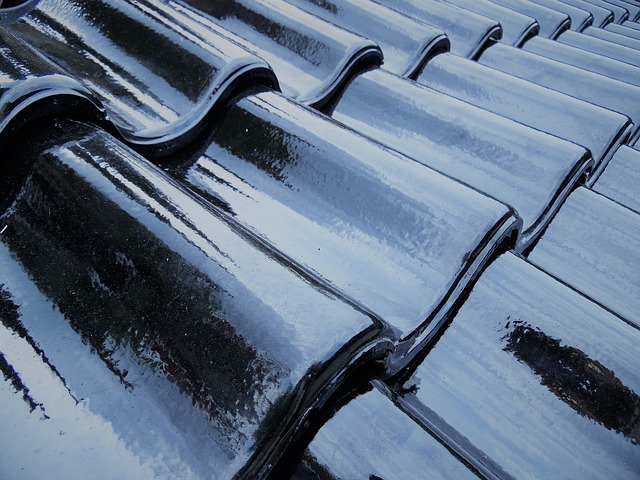When planning a roofing project, understanding material costs, installation fees, and regional factors is crucial for effective budgeting. Metal roofs offer exceptional longevity but higher upfront costs, while tiles provide classic aesthetics and durability at a moderate price. Shingles are budget-friendly but less durable. Roofing project budgeting considers material type, roof size/complexity, local labor rates, and accessibility of materials. Researching prices from suppliers and contractors ensures the best value for informed decision-making within financial constraints.
When it comes to a roofing project, budgeting is key. Understanding the costs associated with different materials like metal, tile, or shingles can help you make an informed decision that balances aesthetics, durability, and your wallet. This comprehensive guide delves into the financial aspects of each option, offering insights into their longevity, installation complexities, and material expenses. By exploring these factors, you’ll be better equipped to navigate roofing project budgeting with confidence.
Understanding Roofing Material Costs: A Comprehensive Overview
When planning a roofing project, understanding the cost structure is crucial for effective budgeting. Roofing materials are a significant investment and can vary greatly in price depending on factors like durability, quality, and aesthetics. Each material offers unique advantages and disadvantages that impact both upfront costs and long-term expenses. Metal roofs, for instance, provide exceptional longevity and resistance to harsh weather conditions but may be pricier than traditional shingles or tiles. On the other hand, tiles offer a classic look but can be more prone to damage over time compared to metal or modern synthetic shingles.
Comprehensive budgeting requires considering not only the cost of materials but also installation fees, which can vary based on complexity and local labor rates. It’s essential to research and compare prices from different suppliers and contractors to ensure you secure the best value for your roofing project. Efficient budgeting allows homeowners to make informed decisions, ensuring their projects stay within financial constraints while delivering high-quality results.
Metal Roofs: Durability Meets Price
Metal roofs are known for their exceptional durability and longevity, often outperforming other materials in terms of resistance to extreme weather conditions. This durability translates into a longer lifespan, reducing the need for frequent repairs or replacements, which can significantly impact your roofing project’s budgeting. While metal offers these advantages, it’s important to note that initially, it tends to be more expensive than traditional options like shingles or tile. However, when considering the long-term savings and reduced maintenance, metal roofing becomes a compelling choice for those looking to invest in their home’s protection.
Tile Roofs: An Investment in Prestige and Longevity
Tile roofs have long been associated with prestige and quality, reflecting a sense of sophistication on any property. Beyond their aesthetic appeal, tile roofs offer significant advantages in terms of longevity and durability. Each tile is designed to withstand harsh weather conditions, including high winds, heavy rain, and extreme temperatures. This robust construction ensures that your roof remains a protective barrier for many years, providing excellent value for money in the long run.
When considering a roofing project, budgeting becomes more straightforward with tiles since they typically require less maintenance than other materials. Their seamless design reduces the risk of leaks, and their resistance to rot and pest damage further extends their lifespan. This investment not only enhances the curb appeal of your home but also contributes to its overall value, making it a wise choice for those looking to ensure their roofing project offers both immediate satisfaction and long-term benefits.
Shingles: The Budget-Friendly Option, But How Does It Hold Up?
Shingles are often considered the budget-friendly option for a roofing project, with significantly lower upfront costs compared to metal or tile roofs. This makes them an attractive choice for homeowners looking to keep expenses down. However, when it comes to durability and longevity, shingles may not hold up as well as their pricier counterparts. While they offer adequate protection against minor weather events, they are more susceptible to damage from heavy storms, high winds, and extreme temperatures. Over time, shingles can deteriorate, become loose, or even curl, leading to leaks and the need for premature replacements. Thus, while shingles may be a cost-effective initial investment, their lower durability can translate to higher long-term maintenance and replacement costs.
Factors Influencing Roofing Project Budgeting
When budgeting for a roofing project, several factors come into play, shaping the overall cost. One key aspect is the roofing project budgeting itself, which can vary widely depending on the chosen material. For instance, metal roofs often carry higher upfront costs but offer long-term savings due to their durability and reduced maintenance requirements. On the other hand, tile and shingles may be more affordable initially but could necessitate replacement or repair more frequently.
Size and complexity of the roof also significantly impact roofing project budgeting. Larger roofs naturally incur higher labor and material expenses. Sloped roofs with intricate designs or unusual shapes can add to the cost due to the specialized skills and materials needed. Moreover, factors like local labor rates, accessibility for delivery and installation, and the availability of specific roofing materials in your area can all contribute to the final budget.
When comparing roofing materials, each option offers a unique blend of durability, aesthetics, and cost. Metal roofs excel in longevity but carry a higher price tag, while tile roofs provide prestige and durability at a premium. Shingles remain the budget-friendly choice, but their long-term performance should be carefully considered. Effective roofing project budgeting requires weighing these factors to find the perfect balance between cost and quality that meets individual needs and ensures a sound investment in your home’s protection.
